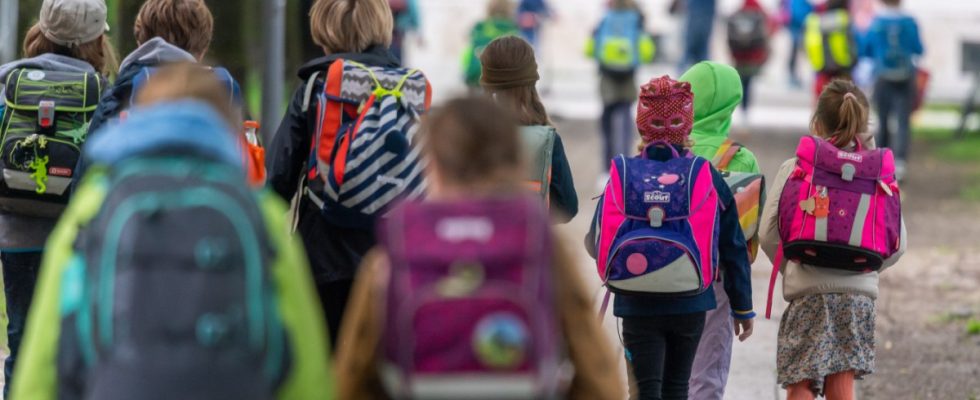It’s just a try. But one that could set a precedent nationwide: Since the beginning of this week, two red and white warning cones have prevented turning into Essen’s Bardelebenstrasse three times a day. And on the sidewalk there is a prohibition sign that explains the new traffic situation: A red circle frames a motorcycle and a car – no access, “residents free”.
Julia Schnetger can explain why this is so. Up until now, as the mother of a fourth-grader describes it, there has been “a dangerous traffic chaos” on the narrow side street, which is only 170 meters long, in the morning, at noon and in the afternoon: Dozens of cars rolled over the asphalt and stopped on the narrow sidewalks to take the “parents’ taxi” quickly bring the daughter or son to school. Or pick her up. Children who came on foot somehow had to make their way between all the bodies, it often got dangerous, years ago a child was even hit. “Oh, damn, that was close” – this sentence, says Julia Schnetger, has shot through her head umpteen times in the past.
Things have been quieter on Bardelebenstrasse since Monday. “Parent taxis” must remain outside, at least from 7.45 a.m. to 8.30 a.m., from 1.00 p.m. to 2.15 p.m. and from 3.45 p.m. to 4.15 p.m. These are exactly the drop-off and pick-up times when this one-way street was usually congested. Two schools – a grammar school and an elementary school – call for 1,800 students to attend classes here every day. Instead, motorized parents now have to drive to three so-called “parent stops” nearby, which are reserved for them by the city of Essen for boarding and alighting during the closing times. On Tuesday, Schnetger, who supports the experiment with a team of 25 parents and puts up the warning cones every day, draws a first, very preliminary interim balance: Only four fathers and mothers behind the wheel were surprised, “there were far more thumbs up than shaking heads “.
David Huber, a research associate at the Institute for Mobility and Urban Planning (Imobis) at the University of Duisburg-Essen, then takes on the exact evaluation of the experiment. Huber is accompanying a whole series of experiments in Essen with which the metropolis in the Ruhr area wants to drive its traffic turnaround: So far, according to a survey from 2019, 55 percent of all mobility there has been by car, 19 percent each on foot or by public transport and only seven percent on the bike. By 2035, this so-called “modal split” should change massively – and evenly distributed to (as the city slogan goes) “4 x 25 percent”.
Huber now counts: For example, 60 parent taxis every morning in Bardelebenstrasse (when the sun is shining, more when it rains). He wants to measure whether and how car traffic is declining – even after the end of an initial three-month test phase. According to Huber, the experiment could even break a suspected vicious circle: “Out of concern, more parents may be taking their children by car. But that creates more traffic – and even more danger.”
Perhaps the Bardelebenstraße will even become a model: it is what the road traffic regulations previously prohibited: the first “school street” in Germany. By the way, Austria has already legalized school streets in 2022 – after tests in Vienna.

